
Copywriting is content writing to make a sale. Copywriting is precise, effective, and revolves around creative problem-solving. Ideally, a brand’s copy is driving conversions while creating meaningful experiences for the target audience.
The features, the benefits, and the price of a product help determine whether a consumer is willing to convert. Copy is the way you communicate value to these potential customers.
Today we’re focusing on the power of copywriting.
What, Exactly, Is Copywriting?
There’s a lot of confusion out there when it comes to copywriting.
No, it’s not about who has the right to publish a book or a photo (that’s copyright) nor is it just about writing blogs or social media posts, though those two can blur the lines of copywriting and marketing, depending on your goals.
Copywriting is content writing with the direct goal of making a sale.
Copywriting might be found on:
- Website pages
- Brochures
- Paid ads
- Landing pages
- Product pages
Here’s a copywriting example from my website. It’s actually a popup that displays after a reader has been on the page for a few minutes:
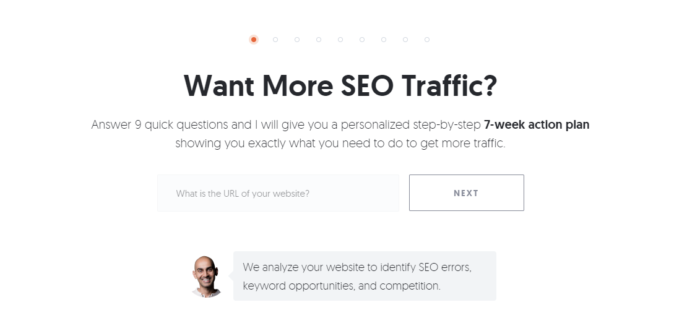
Notice how it’s short, to the point. There’s no fluff; instead, it focuses on the benefits and the next action users should take.
How Does Copywriting Differ from Content Marketing?
Copywriting is content directly aimed at making sales. Content marketing can have different goals (which might include making sales), but focuses on less direct goals, like educating, amusing, or building brand awareness.
Copywriting is more direct, more precise, and leaves less open for interpretation. Here is what we sell, this is why you should buy it, and here’s what it can do for you.
What Is a Copywriter?
To put it bluntly, copywriting is about sales. Your objective is to create content and experiences that drive conversions, plain and simple. Still, all this talk about writing brings up an important question. What’s the difference between a copywriter and your typical content writer?
It’s easy to understand the confusion. After all, they’re both technically writers. In my experience, I’ve found that talented copywriters are often just highly evolved content writers. While a content writer has mastered the art of creating compelling blog posts and articles, the copywriter goes beyond that.
An effective copywriter understands what drives conversions and incorporates that into their copy. They aren’t just capable of creating blog posts. They understand how to market through Google Ads, email newsletters, and Instagram posts.
Savvy copywriters go a step further, conducting product research, analyzing behavioral psychology, and generally developing creative solutions to complex marketing problems.
What Skills Do You Need to Become a Copywriter?
To become a copywriter, it’s not enough to be a talented writer. You need a flexible, adaptive style that can adjust to the needs of your brand. One day, you might need to craft a press release. The next, you’re writing clever captions for Instagram ads and writing an email for your latest product launch.
Being flexible with your writing is important, but having the ability to think creatively and solve your brand’s marketing problems will make you extremely valuable.
There’s the usual collection of skills you’d expect for a position like this, such as strong research and technical skills. Unsurprisingly, communication skills can make or break copywriters.
Not just communicating through your writing, but communicating with your team and coworkers. Having a great idea is one thing; convincing your peers of its value is another.
If that sounds confusing, just picture this: Imagine two possible directions you can take your brand. In theory, you can test on a small scale and develop your brand over time. Of course, when resources and time are a factor, being right the first time is exceptionally valuable.
One of the company execs wants to lead with direction A, and they have some data that supports their claim. You, on the other hand, want to focus on direction B, and you’ve also got some data to support you.
Neither direction has airtight data, and the team can’t afford to waste time. What direction will they choose?
The answer is, they’ll support whoever makes the most compelling case. As a copywriter, you should always be your brand’s best salesperson. If you have the brand know-how and can communicate that to your team, there’s a good chance you can save your team a lot of money.
Types of Copywriting
Not all copywriting is created equal. Depending on what you choose to specialize in, you could be working on anything from a nationwide commercial to an Instagram post. It’s all a matter of identifying the marketing that best serves your brand’s audience.
Brand Copywriting
When you tell people you work in marketing, this is typically what they imagine: commercials, billboards, and jingles for brands like Pepsi, Burger King, and Netflix. Brand copywriters go beyond the typical features and aim to create strong emotional responses. Creative copywriting is less about proving a brand is better than the competition and more about creating a memorable experience.
Social Media Copywriting
As a brand, your goal when crafting copy for social media is to engage audiences through posts and ads. The challenge with this style is adapting your brand messaging into a variety of unique formats. For example, the copy you write for a post on Facebook shouldn’t be identical to the copy on a TikTok or Instagram post.
SEO Copywriting
SEO is all about getting your content to rank highly on the search engine result pages (SERPs). To rank highly, your content needs to deliver genuine value to users while mixing in a healthy amount of keywords and phrases. Essentially, you’ll be breathing life into copy that needs to meet certain keyword criteria.
Insight Copywriting
At its core, insight copywriting is about establishing your brand as an industry authority. As a copywriter, you achieve this by producing high-value educational content. Some audiences just want simple, detailed solutions to their key pain points. For brands with a more experienced audience, thought leadership can be particularly valuable.
Email Copywriting
Writing an email that’s compelling is a unique challenge, specifically because its presentation is so unusual. You have to write engaging email headlines that aren’t ignored. Clarity is a priority, but so is value. Your call to action (CTA) needs to be strong enough to convert your audience, but the commitment should be small enough that it doesn’t alienate your audience.
Copywriting Examples (Examples of Great Copy)
Here are two examples of excellent copywriting.
Slack
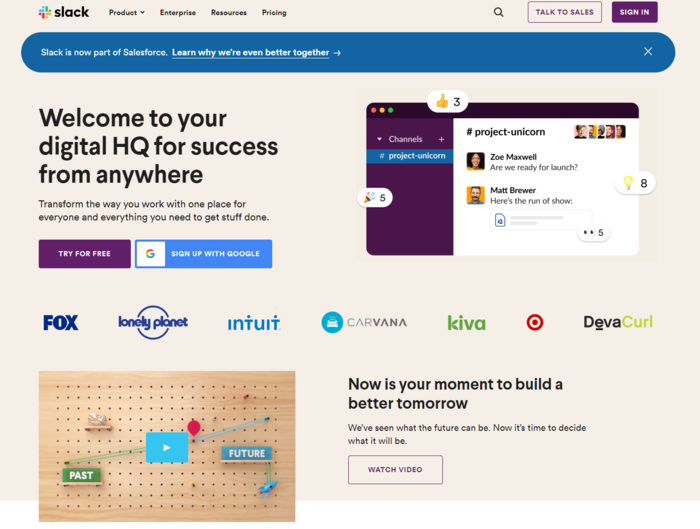
One look at Slack’s homepage, and it’s clear its copywriting team understands how to target its audience’s pain points. The first header highlights how it understands what users really need from them. Slack’s audience wants to maintain connectivity, no matter where they are in the world.
The copy shows that its product isn’t just a temporary solution to the user’s problem. It functions as a future-proof service, able to keep up with the growing demands of the user’s business.
It might seem simple, but finding an engaging way to label and properly address user pain points is no easy feat in under 250 words.
RXBar
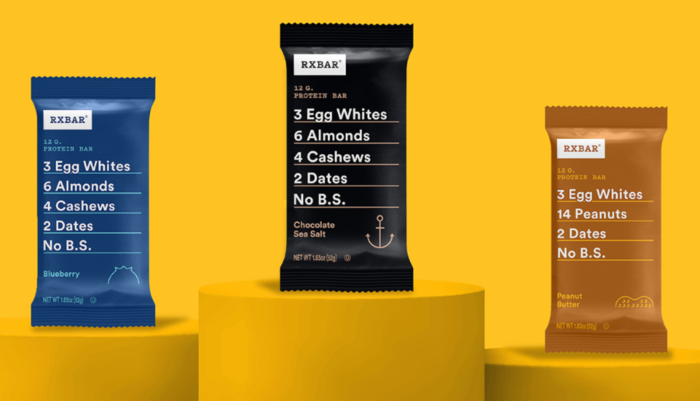
We often imagine traditional marketing materials like articles, social media posts, or commercials when we think about copywriting. While that’s certainly an important part of crafting copy, you’ll need to tackle other creative challenges as a copywriter. One of my favorite examples of this is how RXBar blended its brand and packaging.
RXBar has a very clear goal in mind. Create a no-nonsense protein bar that offers simple, healthy ingredients. The copywriting work begins here, developing the brand message and presentation.
The team at RXBar decided that their packaging should match their brand message. So, instead of having packaging that talks about all the product’s benefits, they decided to simply list the ingredients.
Egg whites, almonds, pecans, cashews, and dates. That’s it. Honestly, it’s such a perfect fit for a no-nonsense brand identity, that I can’t believe no one else thought of it first!
How to Write Killer Copy Like a Pro
Now that you know what a copywriter does, it’s time to dig in and figure out how to do it yourself. Here’s a step-by-step guide to creating copy that will reach your target audience and drive sales.
Step 1: Get to Know Your Audience
You wouldn’t start cooking a meal before knowing how many you are cooking for and what meals they like, right? The same applies to writing copy. Before you begin writing, you need to understand who, exactly, you are writing for.
Start by creating a buyer persona, or a fictional representation of your ideal customer. This will outline who your audience is, including their demographics, job title, location, age, and general information about income.
Consider using a tool like Xtensio, they offer templates that make it easy to create detailed user personas.
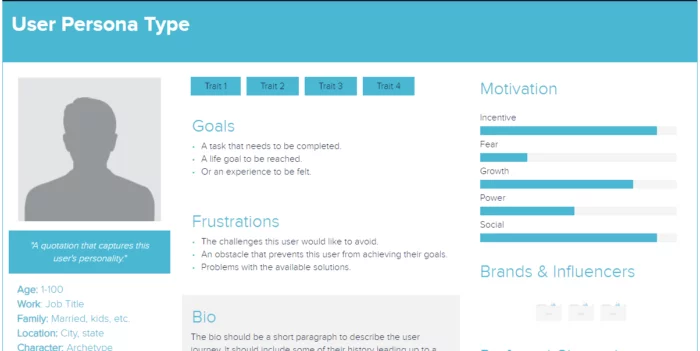
Don’t just wing this. Dig into your current customer data and look for customers with a high lifetime value or retention rate.
Once you have your buyer persona outlined, dig a little deeper by asking yourself questions like:
- Who are you currently selling to?
- Who would you like to sell to?
- What do your current customers love about your offering?
- What struggles do your customers face, and how do you help them solve those problems?
This information will guide you as you begin to write your copy.
Step 2: Use the Right Tone for Copywriting
Writing well is about more than choosing the right words. Tone, or the attitude your writing uses, gives your writing far more context than just the words you choose. It tells prospective customers if you are fun-loving, serious, quirky, or uber professional.
Consider these two copywriting examples for a fictional company that sells sales software:
Understand your customers better using state of the art software designed to take your business from zero to hero.
It’s professional, shares the tool’s major benefits (it’s advanced and helps you understand your customers better.) But it also uses a bit of a quirky tone “zero to hero” is a slang phrase that shows they don’t take themselves too seriously.
Now, consider this:
Gain a deeper understanding of your customers using our AI-powered sales software. SellingPlus software helps streamline your sales funnel and drive revenue.
This example has the same general information as the first, but the tone is more professional and digs a little deeper. They use AI to power their software and help improve the sales process. The tone is more professional, and is likely better suited to a C-suite executive or an enterprise company.
While the information is essentially the same, the tone is adjusted to the audience. It helps customers feel like they are in the right place and this software is right for their business.
If getting the right tone is a struggle, I’ve got great news. Grammarly has a built-in tool that helps you adjust your writing tone to fit your audience.
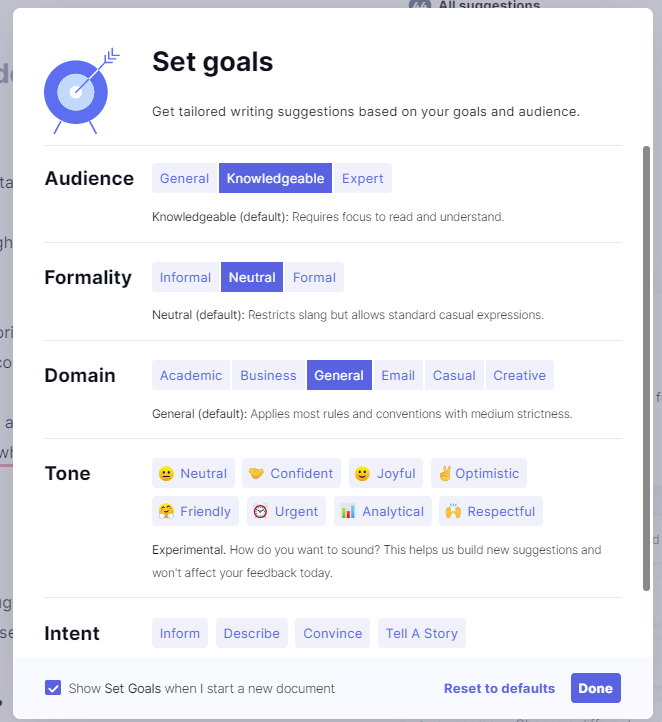
It allows you to outline exactly what tone you want to use based on your audience.
For example, if you choose a “general” audience, the tool will highlight complex sentences that might be hard for a general audience to understand.
Step 3: Stress Your UVP (Unique Value Proposition)
The internet and the rise of globalization has given us more options than ever.
If you want a new mattress, you don’t have to choose from the two local furniture stores — now you can order a mattress from anywhere in the world and have it delivered to your door in days.
Having more options is a good thing. For businesses, however, an increase in consumer options means there are more competitors
Which is why your copy needs to focus on what sets you apart, or your unique value proposition.
Let’s be honest — your business isn’t perfect for everyone, and you shouldn’t be!
Maybe you focus on helping small businesses handle their social media marketing or provide software that helps free-range chicken farmers track egg production.
Your UVP should be laser focused on explaining why you are the right fit for your specific audience.
For example, small businesses have a smaller budget and might want to focus on organic growth rather than paid social ads. Free-range egg farmers might need sensors that cover a wider area than factory farms.
Uber focuses on their convenience. They might not be the cheapest option and they might not be a good option for groups of 10, but they are convenient.
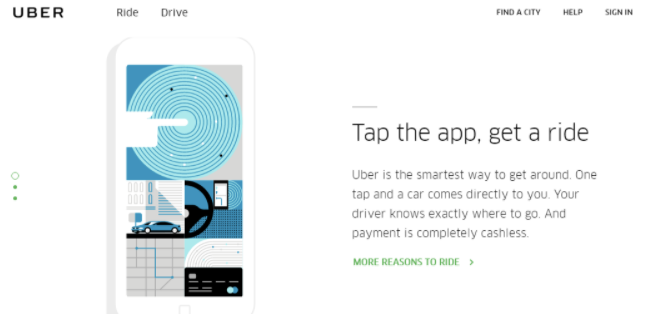
You don’t have to be good at everything. Rather than focusing on all the amazing things you do, take the time to settle on what really sets you apart.
Then focus on that in your copy.
Step 4: Use Copywriting to Solve the Pain Points
When you write copy, it’s tempting to focus on the good stuff like how awesome your product is or how much your current customers love you.
However, customers aren’t looking for a product or service because everything is sunshine and rainbows — they’re looking for a solution to a problem. Those problems are pain points, and they should be the main focus of your copy.
For example, when people consider using the key research tool Ubersuggest, they are looking for more traffic. That is the problem they are trying to solve.
The copy on the landing page focuses directly on that problem by asking, “Want more traffic?”
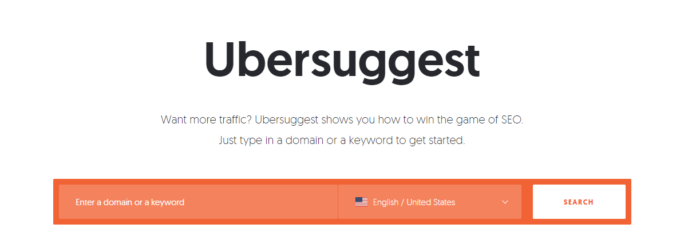
We could focus on what our tool does, or how it helps you research your competitors. Those are great features that users love. But that’s not what they are worried about — they just want more traffic.
According to copywriter Rose Crompton, there are six main pain points customers face:
- Financial
- Risk and trust
- Ease and convenience
- Productivity and time
- Processes and journey
- Communication and support
Think about what pain points your customers face and drive home how you help them solve that problem.
Step 5: Leverage Social Proof
Social proof is a powerful marketing principle. Here’s why it works: when we see that someone else has had a good experience with a product or service, we want to enjoy the same benefits.
Why is it so effective? Because we trust information that comes from other users, like family members or even celebrities, more than information that comes directly from brands.
Say you are looking for a new Indian restaurant. Are you more likely to trust your best friend’s recommendation or an ad you see on Facebook? In fact, 70 percent of consumers trust review sites, while only 33 percent trust advertising.
Social proof can help make copywriting more powerful by increasing trust.
There are two ways to leverage social proof in copywriting:
- Use social proof to inspire your copywriting: Reviews and customer surveys can help you understand what customers love about your product. Use social proof to determine what pain points to focus on and what benefits to highlight.
- Include social proof near copy: Add reviews and case studies to landing pages, homepages, and your website to strengthen your copy and show that other people like what you have to offer.
Step 6: Delete the Fluff
It’s easy to get long-winded when writing. You might be used to writing emails explaining decisions to your boss or crafting workflow documentations. In those situations, a few extra words won’t matter and might actually be helpful.
Even in a blog post, like this one, longer prose can work.
Not in copywriting.
When you write copy, every single word must serve a purpose. If it doesn’t educate, stress a benefit, or build a connection, it needs to go.
Here are a few common words and phrases to ditch when writing copy:
- That
- In order to
- Maybe
- Very
- A little
- Even
- Just
- Perhaps
- So
- Really
- Of
- Like
Now, your copy does have to be readable. Sometimes these words are necessary, but consider whether they actually bring anything to the table or are just filler.
Consider running your copy through the Hemmingway app, which looks for overly complex sentences and phrases.
Then, substitute these filler phrases with powerful words that drive action rather than taking up space.
Step 7: Test, Test, and Test Again
Copywriting is a process. Part of the process is figuring out what resonates with your prospective customers. No matter how much research you do or how many times you poll your audience, you need to A/B test your copy.
I’m consistently surprised by what works and what doesn’t in copywriting. Sometimes leads have different problems, sometimes the tone needs a bit of work. In addition, tastes change over time.
For example, two years ago telling customers you use AI might not have meant anything. Today, with the rise of AI and machine learning, that could be a selling point. If you stuck with the same old copy, you’d never know!
However, there’s one catch — don’t test drastically different versions of your copy. Instead, test one or at most two element changes and see which drives the most conversions. Pick the version that is most successful, then test again. And again.
Here’s a few elements to consider testing:
- Point of view: “You can save” versus “Save now,” for example.
- Button copy: “Buy Now”, “Get your free account” or “Sign up.”
- Headlines: Focus on different features or pain points.
- Formating: Bullet points versus numbers lists, for example.
- Calls to action: What drives consumers to take action? Test multiple CTAs to see what works best.
Several tools make A/B testing you copy easy, including Google Optimize and Optimizely.
Remember, A/B testing should be an ongoing process you use to help improve your copy over time. Don’t run one or two tests and call it good.
How to Become a Copywriter
There are a few paths to becoming a copywriter, each with its perks and challenges.
Some copywriters choose to work for an agency and become staff copywriters. Let’s get one thing out of the way. The variety of assignments at these agencies can be overwhelming at first. After all, you’re expected to create copy for multiple products instead of just one. On the plus side, you’ll gain an impressive amount of experience pretty quickly.
Becoming a copywriter for an in-house marketing team is another common path. If you’re wondering the difference between agency copywriting and in-house copywriting, here’s an easy way to think about it.
Agency copywriting is a bit like teaching a group exercise class. You’re a great instructor, but you can’t commit your focus to any single person for the entire class. In-house copywriting is similar to a personal trainer. You’re able to lock onto your client and make them your absolute priority.
To be fair, most high-quality agencies do their best to make sure clients feel that 1-to-1 connection, but in-house teams simply have more freedom to dive deeper into their brands. This distinction is the reason so many established brands elect to hire an in-house copywriter. They need someone who lives and breathes the brand, brainstorming and strategizing 24/7.
I should also mention that as an in-house copywriter, it’s important to work with a brand you’re excited about. I’ve always found that the best salespeople are the ones who genuinely love a product. You might be able to craft technically competent content for them, but crafting copy for a brand you aren’t interested in means there’s little chance for inspiration to strike.
How Much Do Copywriters Make?
According to Glassdoor, a survey of over 4,000 salaries found that the average base pay for a copywriter in the U.S. is around $57,000 per year. On average, Lead Copywriters earn $67,000 per year, and Senior Copywriters earn over $90,000 per year.
Seven Step Guide To Better Copywriting
Copywriting can establish your brand, drive sales, and increase revenue. Here’s a step-by-step guide to creating copy that will reach your target audience and drive sales.
- Get to know your audience
Create a buyer persona to outline who your copy targets.
- Use the right tone
Help customers feel like they are in the right place by adjusting your tone to fit your audience.
- Stress your unique value proposition
Your UVP should be laser focused on explaining why you are the right fit for your specific audience.
- Use copywriting to solve the pain points
Think about what pain points your customers face and use copy to drive home how you help solve that problem.
- Leverage social proof
Reviews and customer surveys establish trust and help you understand which pain points to address.
- Delete the fluff
Every single word must serve a purpose. If it doesn’t educate, stress a benefit, or build a connection, it needs to go.
- Test your copy
No matter how much research you do or how many times you poll your audience, you need to test your copy to understand what messages resonate with your audience.
Conclusion
Learning to write powerful copy is key to a successful digital marketing strategy. The best product or service won’t sell if you don’t know how to write persuasive copy.
The copywriting tips above will help you understand your audience and focus on what matters so you can write copy that converts.
Need help with copywriting? Our team of expert copywriters and content marketers creates epic content that gets clicks, shares, and sales.
Do you have copywriting tips to add to the list? Share your best tips in the comments.


